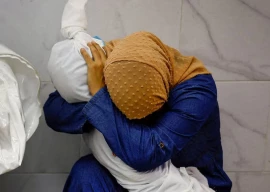
While the country was still reeling from the TLP agitation following the Supreme Court’s acquittal of Aasia Bibi, our PM embarked on his second bilateral visit since coming to power less than a 100 days ago. Now the PM and the high-level delegation accompanying him are back home, there are varied assessments concerning the outcome of this important foreign trip.
Our new PM decided to forego the opportunity to address the UN General Assembly soon after coming to power. Instead, he went first to Saudi Arabia and the UAE, and then China. He visited Saudi Arabia despite the controversy stirred by the killing of a famous Saudi journalist in Istanbul and this visit paid off resulting in promises of a $6 billion infusion into Pakistan’s cash-strapped economy.
After the Saudi/UAE visit, it was not surprising to see China as the next country on our PM’s itinerary. The ongoing CPEC project has brought Pakistan and China much closer together. While CPEC offers Pakistan a unique opportunity to grow and prosper, the initiative has also put our already highly-indebted economy under further stress.
The need to take on additional loans to finance CPEC projects has led Pakistan’s debt-servicing burden to become so onerous that we need to arrange loans from a range of sources to keep the economy afloat. The Saudi promises have provided some respite, but the PM aimed to secure similar largesse from the Chinese.
China did express its willingness to help Pakistan in a joint statement during the PM’s visit. Yet, this statement lacked any details of what Chinese help would look like. Initial international press reports were quick to suggest that Pakistan got a cold shoulder during the China visit. However, our finance and foreign ministers have since stated that Pakistan’s balance-of-payments crisis is over. They have claimed that China has in principle committed to provide short-term relief to Pakistan, and the modalities of this financial aid are to be discussed in a new round of discussions in Beijing starting today (on the 9th of November).
China’s willingness to provide financial assistance to Pakistan may well help avert the need to approach the IMF for a bailout package. The US is not keen to allow the IMF to lend to Pakistan to pay off Chinese debt. China also realises that the global lender is prone to scrutinise Chinese loans to Pakistan.
Pakistan itself does not seem too concerned about the prospect of debt trap diplomacy, whereby China’s influence increases in proportion to the amount of money it is owed, as has become evident in Sri Lanka, Malaysia and several African nations.
During the PM’s China visit, he has signed several MoUs to enhance cooperation in different sectors ranging from agriculture and poverty alleviation. It will be curious to see what these MoUs imply. China is a communist country which suffered massive famines under Mao’s rule, and then gradual agricultural reforms managed by subsequent communist leaders overcame famines whereas in Pakistan we have an elite-led agrarian economy. How Pakistan can expect to use the Chinese model to achieve effective rural development without increasing prevailing disparities remains to be seen.
There are also major political and geostrategic considerations which both China and Pakistan need to develop consensus on. China is working with both Iran and many Gulf states, including the Saudis, under the OBOR initiative. Pakistan’s desire to make Saudi Arabia the third strategic partner in CPEC, and then to revoke this offer, seems to indicate the need for a clearer understanding between China and Pakistan. How CPEC should link with the larger OBOR initiative, and how this may be done without aggravating regional rivalries between Iran and the Gulf states, needs further deliberation. Besides the challenge of ensuring that CPEC benefits do not bypass the Balochis, China’s harsh attempts to suppress Muslim restiveness in Xinjiang, where CPEC originates from, is another issue of growing concern. All these factors add challenges to the success of CPEC, and therefore merit closer attention and debate, besides the immediate need to pay the bills for CPEC-related infrastructure.
Published in The Express Tribune, November 9th, 2018.
Like Opinion & Editorial on Facebook, follow @ETOpEd on Twitter to receive all updates on all our daily pieces.





























































COMMENTS (3)
Comments are moderated and generally will be posted if they are on-topic and not abusive.
For more information, please see our Comments FAQ